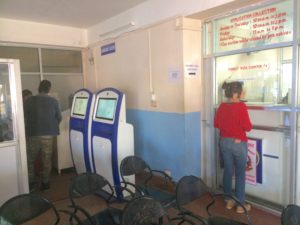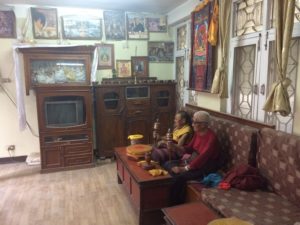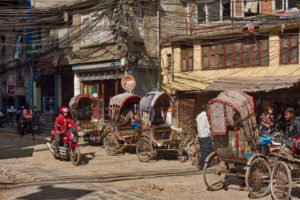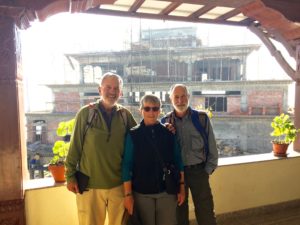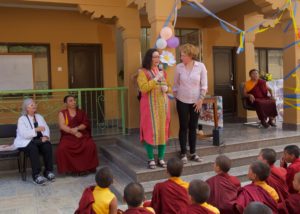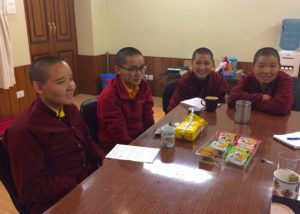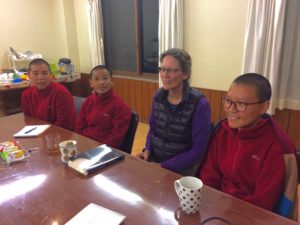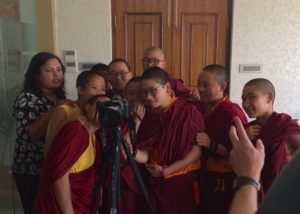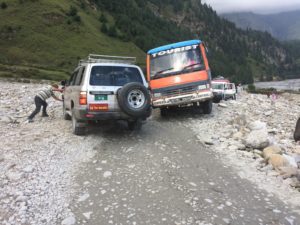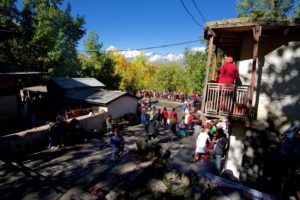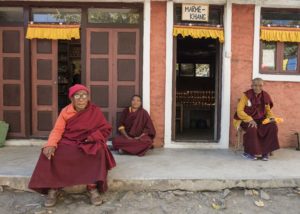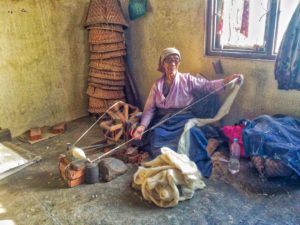 This week marks the end of 3 months here in Nepal. I know this primarily because I had to renew my VISA yesterday at the Department of Immigration. You would think that this process would be pretty straightforward. They provide a website where you can complete the details of who you are, passport information, and how much longer you wish to stay. Filling it out successfully yields a bar code page that allows them to access this information. Take the barcode form into the Immigration Office, pay the fee and continue to enjoy the people and places of Nepal. Simple right? Not!
This week marks the end of 3 months here in Nepal. I know this primarily because I had to renew my VISA yesterday at the Department of Immigration. You would think that this process would be pretty straightforward. They provide a website where you can complete the details of who you are, passport information, and how much longer you wish to stay. Filling it out successfully yields a bar code page that allows them to access this information. Take the barcode form into the Immigration Office, pay the fee and continue to enjoy the people and places of Nepal. Simple right? Not!
As with many things here in Nepal, one must rely on local friends and fellow travelers for advice and help. First of all, the online form requires a current address. Problem is, it’s difficult to determine your address. One person told me, “Just enter some random information. They don’t really care where you live.” That would be easy except for the second point; they don’t just ask for a street and number. There is a whole string of information they require, with no explanation of what the fields represent.
 Thankfully, one of our kind administrators at TGL, Dolkar, provided me with a reasonable answer for each box.
Thankfully, one of our kind administrators at TGL, Dolkar, provided me with a reasonable answer for each box.
Now, I’m no stranger to long forms on the Internet. For 14 years I filled out a 20 or 30 page Federal eRate application for my school district. I’d have to say that this one page Immigration form was more daunting.
I won’t go into specific problems or the technical details of why it sucked so bad but I entered my information 5 or 6 times (I really lost track in the midst of my frustration). Each time I was rejected and required to re-enter the information with very little feedback as to what was wrong. Finally I gave up – or delayed my frustration really (the opposite of delayed gratification) for another day.
Pressed up against a November 22nd deadline, Joni and I began asking people for the secret method for overcoming this hurdle. Fortunately we were at a teaching with Chokyi Nyima Rimpoche (Tsoknyi Rinpoche’s brother) in Boudha where hundreds of “immigrants” just like us were being blessed by his wisdom. The best advice and assistance came from a young lady who had learned that it is best to use a phone rather than a computer for the form. Skeptical but thankful for her help, I used her phone and relied on her advice and persistence to get a positive return – the precious bar code. The end result was a form that didn’t have accurate information but it did have all the required boxes filled in to the satisfaction of the computer database that accepted it.
Guardedly relieved by our success, Joni and I managed to get to the Immigration Office over an hour before their advertized closing but were told they had closed 5 minutes before we got there. After making a sarcastic remark to the guard about “Nepali time”, we exchanged smiles and I went on my way.
The following day, I got another exciting motor scooter ride, from a TGL staff member Kechok, to the Immigration office in Kathmandu where our magic barcodes were accepted – but not without some cajoling in Nepali by Kechok. Following him, I moved from window to window listening to negotiations on the details with various bureaucrats. It was only through his determination and experience with Immigration that I was able to get Joni’s form accepted without her present and get their final stamp of approval. The irony is that Kechok is a 29 year old Tibetan who, because of his heritage and age, has no national identity whatsoever. He can’t vote, isn’t a “citizen”, and has no papers for travel abroad. Despite his national limbo he was my hero for the day.
VISAs in hand, Kechok treated me to a ride back to TGL, with a stop at his home in the Tibetan Refugee Camp. This was my second time at the Camp. Last time he showed me the small school and home for the elderly in the camp.
This time, he gave me a tour of the weaving and spinning business that supports the people and services in the Camp. As you can see from the pictures, there isn’t much room for them to work but this doesn’t prevent them from putting in long hours contributing to their community. All the proceeds of their work support the school, the elderly home and the people and services of the community. The temperature in the weaving building was very pleasant yesterday but, the number of looms and the number of fans on the ceiling indicate that it is probably stifling in the summer.
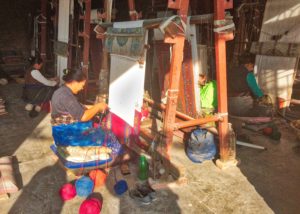
Our time here in Kathmandu is going fast now. We have spent quite a bit of time in the city lately. We stayed in Thamel in the company of friends from the US one weekend. This gave us some time to shop, eat good food and relax in the comfort of our hotel. We walked to Kathmandu Durbar Square, one of the largest of the Durbars in Kathmandu. The walk was interesting with scenes of commerce and tourists packed into the narrow streets (that feel like alleys). It was a treat to show our friends where we live as we returned home for work on Monday.
As I mentioned, last weekend we attended the teachings of Chokyi Nyima Rimpoche. He is the oldest of the 4 sons of Tulku Urgyen Rimpoche, one of the greatest meditation masters of our time. His brothers include Tsoknyi Rinpoche (my teacher), Mingyur Rinpoche, and Tsikey Chokling Rimpoche. This coming weekend we will attend a teaching with Mingyur Rimpoche.
In 2 days you will all be enjoying Thankgiving dinner. I hope that you have a wonderful holiday with friends and family. We all have much to be thankful for don’t we.

